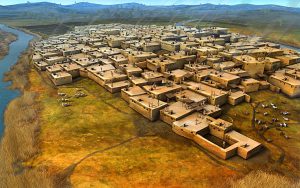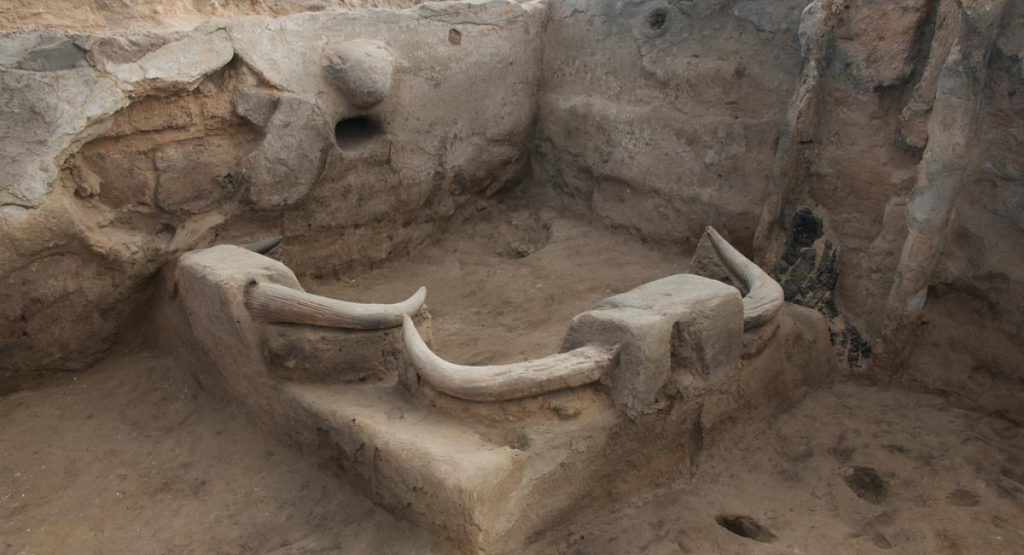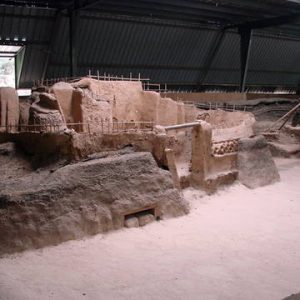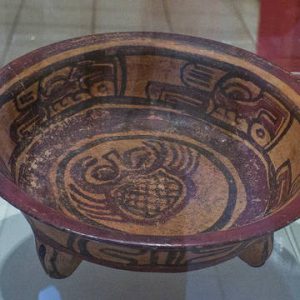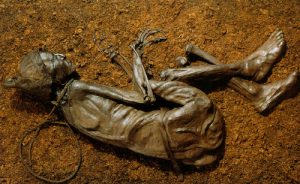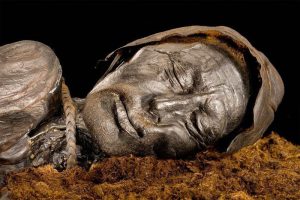Around 7,400 BCE, people first settled in Central Turkey at the site of Çatalhöyük. By 6,500 BCE, the site was a Neolithic urban center. Several construction phases of tightly packed mud brick houses led to the formation of a tall mound at the site. The excavation of the mound and the examination of discovered features and artifacts led to the understanding of what life was like in the Neolithic community and how it developed over time. The site provides great insight into how early farming communities functioned and what activities and items they valued.
The dense settlement was made up of mud brick houses, each with an entrance on the roof. All of the houses were closely packed together, with zero space dedicated to streets or major pathways. Evidence of crop cultivation and domesticated animals proves that the last group to occupy Çatalhöyük was a segmentary society of farmers and herders, not a mobile group of hunter-gatherers. It was not a large enough settlement to be considered a chiefdom or state, but still had up to 9,000 residents. Inside the mud brick houses, there were cooking spaces with ovens and hearths. As agriculture was beginning to become the dominant way of life, food preparation was developing. More serious cooking tools could be built because people had the ability to settle down and build houses, instead of temporary camps.
The presence of wall paintings and relief sculpture contributes to the understanding of the culture and beliefs of the people at Çatalhöyük. The plastered walls of the houses were used to display painted geometric designs or reliefs of wild animals. One of the most abundant forms of art found at the site was clay figurines. They were found throughout various areas of the houses, but usually in garbage pits. The Çatalhöyük people may have used the sculptures to protect against evil spirits or as wish tokens. Another important art form was the installation of animal remains into the main rooms of the houses. Many bull skulls can be found lining the walls of the rooms, with huge horns sticking out into the living space. The presence of undomesticated animals in the art of the Çatalhöyük people may show a desire to remember the recent past, when hunting was still the main source of food.
The art, organization of houses, and presence of agriculture suggests that the residents of the Çatalhöyük site were in a position in which they could stay in one spot and hold territory. They had stable enough resources to devote time to the arts, but used paintings and installations to connect them to the memories of the past way of life. Çatalhöyük was one of the largest settlements of its time, and by examining the ancient structures and artifacts we can gain insight into how humans lived during the beginning stages of farming and crop cultivation.
References:
https://www.khanacademy.org/humanities/prehistoric-art/neolithic-art/a/atalhyk
http://whc.unesco.org/en/list/1405
Images:
http://www.sci-news.com/archaeology/science-catalhoyuk-map-mural-volcanic-eruption-01681.html
Further Reading:
http://www.ancient-origins.net/ancient-places-asia/9500-year-old-honeycomb-city-atalh-y-k-00840
http://www.hurriyetdailynews.com/new-findings-at-catalhoyuk-.aspx?pageID=238&nid=94106

